SpaceX and the Scale of Things to Come
Big things are happening with SpaceX. Not just with big launches and landings, but also with big news and events. On Tuesday, September 7, 2017 at 10 AM EDT, SpaceX launched the Orbital Test Vehicle 5, otherwise known as OTV-5, for the US Air Force. This was an important launch for SpaceX because it was the first time they have been able to launch the X-37B vehicle that hosted the OTV-5 mission.
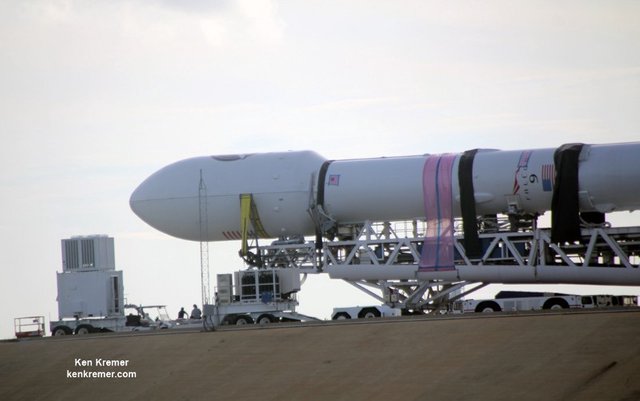
The OTV-5 X-37B housed within a Falcon 9 fairing on its way to the pad (credit: Ken Kremer)
The X-37B is a reusable space plane that is built by Boeing and operated by the USAF to perform various long duration missions on orbit. While the actual launches are not always kept secret, the missions themselves are typically classified — barring any tidbits released by the USAF about what is being tested. In the case of the OTV-5 mission, the USAF acknowledged that the Advanced Structurally Embedded Thermal Spreader II (ASETS-II) will be a part of the payload. The results of this experiment may facilitate better thermal management for electronics and reduce cost of coolant systems. You can read more about that experiment here.
The X-37B itself is a quite a bit different than the Space Shuttle that people are used to seeing. Instead of riding on the exterior of the rockets, it resides inside the payload fairing. After exiting most of Earth’s atmosphere, the fairing is ejected and the space plane is released to fly on its own power. When it is finished with its mission (the longest of which has been 717 days!), it deorbits and glides to a landing at the Kennedy Space Center’s Shuttle Landing Facility or at Vandenberg AFB in California.
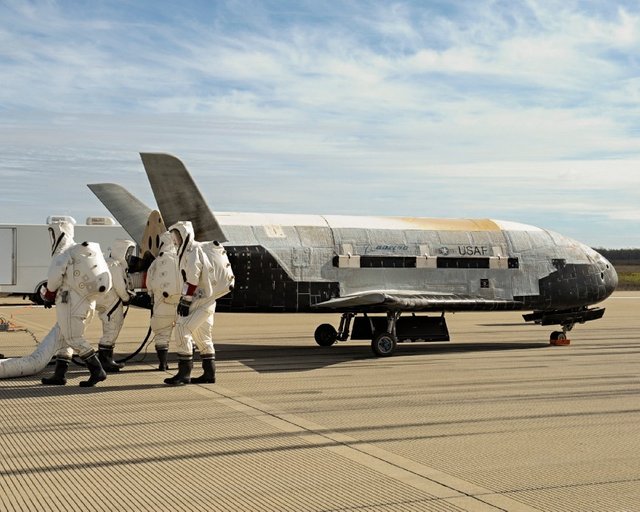
Recover teams processing the X-37B at Vendenberg AFB shortly after it has landed from 674 days in space (credit: Boeing)
Due to the secretive nature of the payload, the launch on Tuesday had an abbreviated live feed. While a successful primary mission of releasing the X37B was later confirmed, public viewers were not allowed to watch that aspect of the mission. Instead, the focus turned to the first stage as it returned for a gentle landing at SpaceX’s Landing Zone 1 (LZ-1) at the Cape Canaveral Air Force Station. This marked the 7th landing at LZ-1 and the 16th successful landing in total of a SpaceX Falcon 9 booster.
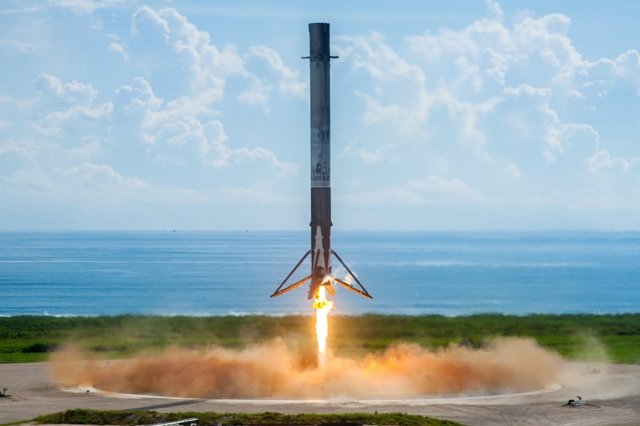
SpaceX Falcon 9 Booster landing at LZ-1 after sending OTV-5 towards orbit. (credit: SpaceX)
While the pictures are certainly stunning, especially with the ocean and blue Florida skies in the background, they can be very misleading as to exactly how large the booster is and how remarkable it is that this is coming to a gentle landing after reaching a maximum speed of 5975km/h (3700mph) prior to stage separation. In fact, even after falling through the atmosphere, the booster is still going faster than the speed of sound until about 35 seconds before it lands.
So how big is the booster, anyway? This first stage itself is about 40 meters (130 ft) tall and 3.7 meters (12 ft) in diameter. But that doesn’t include the interstage, the part that houses the second stage engine during launch. That adds another 6 meters (20 feet) to the part of the rocket that lands to bring it to a grand total of about 46 meters or 150 feet. After landing, it is another couple of meters taller due to the landing legs holding the core stable. However, unless you constantly work with large things, just the numbers can be a bit mysterious. What does 46 meters actually look like?
There are a few iconic structures that are the right size for a comparison. The Statue of Liberty, without her pedestal is 46 meters. In addition, the Water Tower of Chicago is 55 meters, just a tad taller than a landed first stage. The average modern water tower is in the 40 meter range, sometimes a bit higher. As you can see, this is no model rocket.
In other big news, the latest imagery regarding the SpaceX Dragon flight suit was released recently. This marks the first time that all three space suits for the future of US based human space flight have been fully revealed. Elon Musk has stated that he informed the engineers designing the suit that he wanted it to be “bad-ass” and even though it was “incredibly hard to balance aesthetics and function”, it appears that they have accomplished just that.
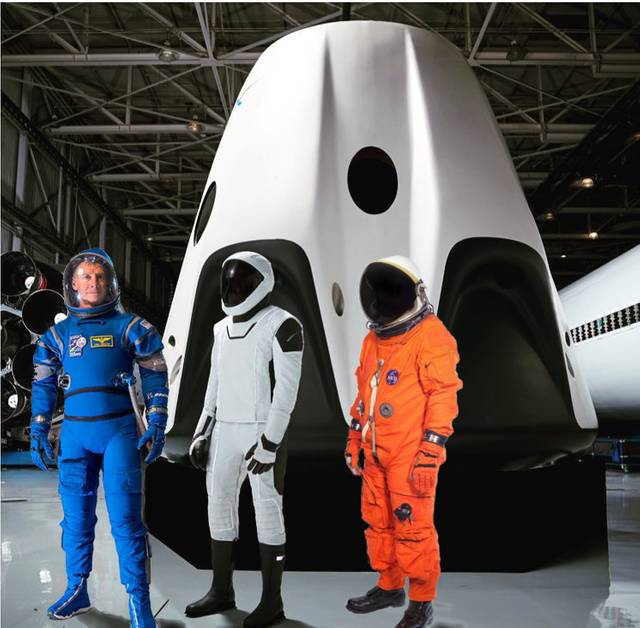
Compiled Image of all three US space suits from Boeing, SpaceX, and NASA (from left) in front of the crewed dragon. (credit: Boeing, SpaceX, NASA)
There are likely to be other released images of the space suit in the coming weeks, including a pressurized view, as the space community awaits the much anticipated update on SpaceX’s Mars plans.
In September 2016, Elon Musk revealed the company’s Interplanetary Transport System during the 67th International Astronautical Congress (IAC) in Guadalajara, Mexico.
In July 2017, however, Elon announced that the vision he had described would be scaled back a bit to focus on the economics of funding and operating such a large set of vehicles. There are many assumptions about what he actually meant by his comments, but fortunately the wait is nearly over. Almost a year to the day from the original announcement, Elon will be appearing at this year’s IAC in Adelaide, Austrailia. He is expected to give an update on the Mars colonization plan at this time.
Following the announcement at the IAC, the SpaceX steamroller will regain its momentum. LC-40, the launch pad that was critically damaged in September of 2016 during a testing anomaly, will be coming back online and the historic LC-39A will stand down for vital upgrades to support Falcon Heavy and Crewed Dragon flights to the ISS and beyond. According to rumors, SpaceX is hoping to complete 20 launches this year including the much awaited Falcon Heavy maiden flight.

Artist's rendering of the Falcon Heavy powering towards orbit. (credit: SpaceX)
Rolling into next year, expect to see up to 40 launches and three major accomplishments spread through the year with regards to crewed Dragon program. The first will be demo flight 1. This flight will be an unmanned man-rated Dragon that will automatically dock to the ISS. This will qualify the Dragon for carrying humans to the station and for automatic docking/undocking operations. This capsule will then return to Earth.
It is expected that this same capsule will be used at some point in the summer of 2018 to test in-flight abort. Pad abort was tested in May 2015 (see video below) and proved the Super-Draco pusher system for a pre-launch abort. In fact, Elon has stated that if the anomaly that had doomed the Amos-6 launch had occurred to a manned dragon flight, the launch abort system would have successfully moved the astronauts out of harms way. An in-flight abort, done at the point where there is maximum dynamic stresses on the rocket, will test if that same system will work in flight.
2018 will also be the year that the final major iteration of the Falcon 9 becomes the principle workhorse of the SpaceX fleet. This version will include upgrades that will provide for faster reuse and extending the usability of any particular core from just a few launches to several dozen. This will also be the version that will be used for the third and most important event with regards to the crewed Dragon program.
Sometime in the Autumn of 2018, with all of the eyes of the world on it, a Falcon 9 with a crewed Dragon capsule will launch into the sky and deliver astronauts to the ISS, thus renewing the United States’ manned flight capabilities and beginning a new era in manned space flight.
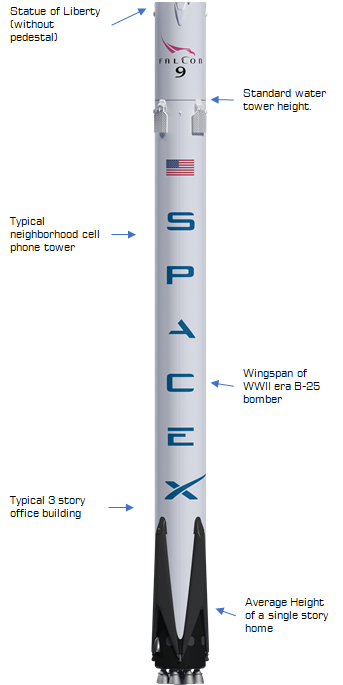
If chosen it will feature in a curation post by @MuxxyBot.
An image from your post may be featured.
Please reply to this comment if you accept or decline.
I enthusiastically accept. I didn't get any email notification abut a comment. I will have to correct that.
Unfortunately, the window has closed on voting and curating your post. However, I'll keep an eye out for future posts from you :) I really enjoyed this post in particular, so with any luck you'll have another chance to be curated by @muxxybot :)